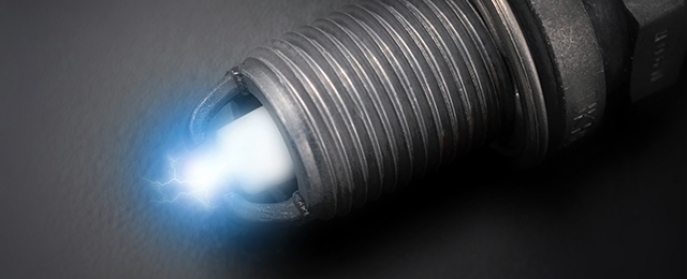
The ignition system in an internal combustion engine plays a crucial role in the vehicle’s overall performance. It is responsible for initiating and controlling the combustion process, ensuring optimal engine operation. This guide will delve into the various components that constitute an ignition system, exploring their functions and significance.
Sparkplugs
Sparkplugs are fundamental to the ignition process. These small but critical components generate the spark needed to ignite the air-fuel mixture in the combustion chamber. The table below outlines the key features and considerations when selecting sparkplugs:
| Feature | Description |
|---|---|
| Electrode Material | Determines durability and heat dissipation |
| Heat Range | Influences sparkplug temperature during use |
| Gap Size | Affects the spark’s ability to jump the gap |
| Resistor Type | Reduces electromagnetic interference |
Contact Sets
Contact sets, commonly found in traditional point-type ignition systems, control the timing of the spark. These sets consist of a movable arm and stationary point that open and close, regulating the spark timing. The table highlights essential aspects of contact sets:
| Feature | Description |
|---|---|
| Material | Often made of tungsten for durability |
| Dwell Angle | Duration the points remain closed, influencing timing |
| Breaker Plate | Holds the points and adjusts dwell angle |
Rotor Arms
Rotor arms are crucial in distributor-type ignition systems, transmitting the high-voltage pulse from the ignition coil to the sparkplug wires. The table outlines key considerations for rotor arms:
| Feature | Description |
|---|---|
| Material | Often made of plastic, metal, or a composite |
| Rotation | Distributes the high voltage to each sparkplug |
Condensers
Condensers, also known as capacitors, work in conjunction with contact sets in point-type ignition systems. They store electrical energy and release it when the points open, ensuring a consistent spark. The table highlights important features of condensers:
| Feature | Description |
|---|---|
| Capacity | Measured in microfarads, influences spark consistency |
| Dielectric Material | Affects the condenser’s ability to store charge |
Distributor Parts
The distributor is a critical component in traditional ignition systems, responsible for routing the high-voltage pulse to the correct sparkplug. The following table explores key aspects of distributor parts:
| Feature | Description |
|---|---|
| Shaft Type | Determines the rotation mechanism of the distributor |
| Vacuum Advance | Adjusts ignition timing based on engine load |
| Mechanical Advance | Alters timing based on engine speed |
Distributor Caps
Distributor caps provide a path for the high-voltage pulse to travel from the rotor arm to the sparkplug wires. The cap also prevents cross-firing between terminals. The table outlines important features of distributor caps:
| Feature | Description |
|---|---|
| Material | Commonly made of plastic, aluminum, or a composite |
| Terminal Type | Determines the connection to sparkplug wires |
| Ventilation | Aids in cooling and prevents internal arcing |
Ignition Coils
Ignition coils are responsible for transforming low-voltage power from the battery into the high-voltage pulse needed to spark the sparkplugs. The table explores crucial aspects of ignition coils:
| Feature | Description |
|---|---|
| Primary/Secondary Windings | Conduct electricity at different voltages |
| Core Material | Influences magnetic field strength |
| Coil Resistance | Affects current flow and voltage output |
H/T Fittings & Terminals
High-tension (H/T) fittings and terminals are essential connectors in the ignition system, ensuring a secure and efficient transmission of high-voltage pulses. The table outlines key considerations for H/T fittings and terminals:
| Feature | Description |
|---|---|
| Material | Often made of brass or stainless steel |
| Insulation | Prevents arcing and ensures a reliable connection |
| Connector Type | Determines compatibility with sparkplug wires |
Sparkplug Fittings & Caps
Sparkplug fittings and caps serve as the final link in the ignition system, connecting the sparkplug to the ignition coil. The following table explores important features of sparkplug fittings and caps:
| Feature | Description |
|---|---|
| Material | Commonly made of silicone or rubber |
| Resistance | Reduces radio frequency interference (RFI) |
| Terminal Type | Determines the connection to the ignition coil |
H/T Leads
High-tension (H/T) leads, commonly known as sparkplug wires, transmit the high-voltage pulse from the ignition coil to the sparkplugs. The table outlines key considerations for H/T leads:
| Feature | Description |
|---|---|
| Core Material | Determines flexibility and durability |
| Resistance | Influences the efficiency of the spark |
| Boot Type | Ensures a secure connection to sparkplugs |
